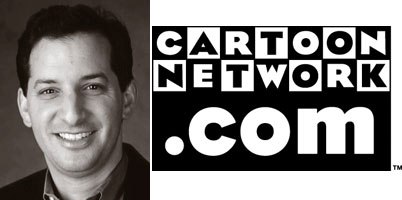Karen Raugust looks at how networks and studios look to the Web to support on-air programming, enhance their brands and generate revenues.
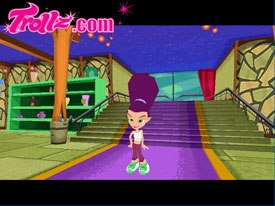
Networks and animation studios use their consumer Websites to support on-air shows, enhance fans brand loyalty and collect information to help tailor programming and marketing initiatives. Increasingly, the Web is also becoming a means of generating revenue through ad sales, merchandise e-commerce and, especially, sales of downloadable games. Websites allow fans to immerse themselves in a show even when it isnt on-air. They can play a game featuring their favorite character, watch short clips of episodes they missed, learn more about characters and plotlines and view original entertainment tied to a program.
PBS Kids objective is to make its Websites and portals extensions of its on-air broadcasts, according to Sara DeWitt, director of PBS Kids and Parents Interactive. She notes that the producers of each show create the associated Website as well, ensuring consistency in educational goals, line art and voices. We want it to feel just like the program, DeWitt says. The parents and teachers area of the PBS Kids site offers activities, explanations of educational goals and other outreach information.
Like other consumer-oriented TV-based sites, Nickelodeon has areas on Nick.com and NickJr.com relating to each show providing links to relevant content such as games, character information and clips as well as areas that aggregate games and other popular themes. We exist to create a universal, unified brand experience, both on and off the air, says Mike Skagerlind, svp/gm, Nickelodeon Online.
Cartoon Network supports all of its on-air programming online as well, including new shows, according to Paul Condolora, vp/gm, Cartoon Network New Media. The channel launches five to seven new series a year and starts promoting each through a show-specific launch site on CartoonNetwork.com six to 10 weeks prior to the on-air debut.
DIC Ent.s primary Web presence is in partnership with Yahooligans!, the childrens area of the Yahoo! portal, for which DIC is the exclusive entertainment provider. Many of the clips on Yahooligans! are edited versions of the shows on DIC Kids Network, a syndicated, three-hour, FCC-compliant educational programming block airing on more than 400 U.S. stations, according to Leila Pirnia, DICs director of strategic planning.

DIC is also using the Internet to build pre-launch awareness for its new property, Trollz, which will focus on direct-to-video entertainment in the U.S. but will have TV exposure internationally. Janet Kirker, vp/exec producer of Trollz.com, says the Website will go live this spring, six months prior to the launch of video and consumer products, creating brand awareness by immersing fans in the property. Instead of watching, they create a character in an avatar-based system and move around in the environment of Trollz.com, Kirker says.
Nancy Fowler, DICs svp of worldwide consumer products, says the company will drive tween girls to the site through e-mail blasts, using lists from Trollz partners such as Hasbro, Scholastic and Warner Bros. and acquired lists. It also will run ads on Websites targeting tween girls and is investigating the idea of street-marketing initiatives to get to that alpha girl, that opinion leader, Fowler explains. Its very grassroots at the beginning. Its important to have the audience discover it. In fall 2005, when the videos, books and toys debut, more emphasis will be placed on traditional advertising and PR.
Focus on Gaming
Online games have become the focal point of many TV-linked Websites entertainment and marketing activity. Gaming is kids third-most frequent activity online, after communications and homework. On online entertainment destinations, its their number-one activity.
Games are the most popular activity on PBS Kids, for example. We hear it in focus groups and the server logs back that up, DeWitt explains. One example is The Quest, a game tied to the PBS series Cyberchase, in which players create their own characters to explore the world of the show. Its all driven by the child, says DeWitt.
Skagerlind reports that 60-70% of weekly visits to Nickelodeons two sites involve their respective gaming areas, where there are nearly 500 game titles collectively. Nickelodeon generates a half billion game plays every year, with about 1.5 million unique individuals playing every week. Gaming is the number-one reason kids come to our site, Skagerlind says. Were primarily a gaming site.
Cartoon Network has more than 110 free and 12 paid games on its site, and generated 1.6 billion game plays in 2004. Ads are placed in front of games and virtually all the entertainment on the site is related to gaming, although that may change with the rise of broadband. One area of interest on CartoonNetwork.com is collectible, digital trading cards, where consumers can display and trade cards, as well as compete in a similar manner as in packaged trading card games such as Yu-Gi-Oh! or Pokémon.
While some marketers focus almost exclusively on games, others make additional forms of entertainment, which as Webisodics or clips, available as well. DIC offers edited 6 to 10-minute clips on Yahooligans!, for example. We found it doesnt work to throw a whole episode online, says Pirnia. It has to be shorter, sweeter and more entertaining. Its a cross between a promo and a mini-episode.
Cyberchase debuted as Webisodes on PBS Kids before going on-air, allowing the producers to give fans the backstory and generate pre-launch interest in the series. Similarly, Trollz.com will air clips from the nine original Trollz DVD titles before they launch in stores.
Condolora explains that Cartoon Network offered several Webisodic series online in 2000 and 2001, but didnt find as much demand for that type of entertainment as it did for games. He believes the increase in broadband uptake may enhance demand for online shorts, although they are unlikely to surpass games in popularity. Already, 60-70% of CartoonNetwork.coms audience uses the site through a broadband connection, according to ComScore Media Metrix and Nielsen//NetRatings, compared to less than 50% for the U.S. population at large. Its certainly overindexing relative to the market, Condolora says.
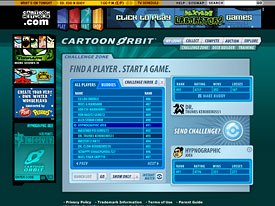
Skagerlind of Nickelodeon, which sees 70-80% of its visits coming through broadband connections, says broadband will allow it to offer enhanced video at faster speeds. As you know, kids are very impatient, he says. It will also enable games, many of which are 3D already, to feature more levels, characters and environments. Thats very exciting for us and exciting for the audience, Skagerlind says. It makes [the Web] a more compelling medium in its own right. To date, Nickelodeon hasnt done much with non-game entertainment online, but has experimented with some original interactive Flash productions where viewers can control the flow of the narrative.
For PBS, a public television station, accessibility is a primary issue, and the network plans to offer content for dial-up users as long as there are dial-up users. But producers of its shows are starting to take advantage of the wider bandwidth of broadband to create more sophisticated online content for users that can receive it. The area on PBS Kids devoted to Boobah, for example, offers lots of interactivity and has sound accompanying all the Flash animation, according to DeWitt, while Maya & Miguel is the networks first show to feature a full voiceover track with online clips.
Testing and Feedback
While supporting on-air properties typically is the paramount objective for TV marketers Websites, some offer online-only content as well, either in the form of original productions or based on library content that isnt currently on-air. Producers and networks have found that, while the popularity of online content largely mirrors that of on-air shows, there are some cases where different properties work online and off.
Pirnia reports that Super Mario Bros. and The Legend of Zelda, neither of which are included in the DIC Kids Network, do very well online. Another series, Super Duper Sumos, has had television exposure overseas but never saw much airtime in the States; it too has performed strongly online. Similarly, Libertys Kids, which aired on PBS but never generated high ratings, is online in an edited version. After the show went off the air, fans called in to find out where to purchase videos, but there werent any. The Web offered fans the opportunity to watch the series when it wasnt available anywhere else. It gives us a way to extend the brand on something that otherwise would just be sitting in our library, Pirnia says. DIC typically has about 10 shows on Yahooligans! at any given time, with content rotating periodically.
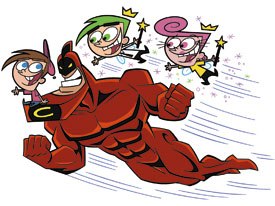
Condolora points out that Samurai Jack, Cartoon Networks critically acclaimed, Emmy-winning series, wasnt one of its strongest performers on-air, but was one of its most-watched properties online while the show was on the network. He notes that the Web where Cartoon Network supports all shows, current and past also serves to keep properties alive, even when theyre being given a rest in terms of on-air exposure.
Nickelodeon has created successful online-only games, and has worked with some of its show creators on original Web entertainment as well; Butch Hartman of The Fairly OddParents, for example, produced a Web comic spinoff called the Crimson Chin. And PBS has two online-only properties Its My Life and Dont Buy It available on its new portal for ages six and up, PBS Kids Go (pbskids.org/go), and two more are in development. Some of these may make their way to TV screens in the future, DeWitt says.
The Web not only allows producers to test shows for on-air potential, but also enables them to integrate feedback about programs already on air. On PBS Kids, the producers of Jay Jay the Jet Plane added a new character to the series based on the results of an online poll. Cyberchase s producers have begun to focus more on the villains within their storylines after discovering online that kids were more interested in these characters than they had expected. Zoom integrates games, recipes and plays that fans submit online.
Although the Childrens Online Privacy Protection Act (COPPA) prevents online marketers targeting children to keep personally identifiable information such as e-mail addresses, mailing addresses or phone numbers, they can track aggregate data such as average age, location, where users enter the site, what browser they use, how long they stay, which areas they spend the most time in and the number of streams for various areas. Kids also can sign up for newsletters or other information; their parents typically are alerted by e-mail and can opt out.
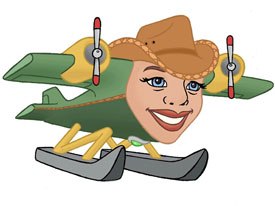
Driving Traffic Back and Forth
TV marketers use various methods to drive TV viewers to the Web and vice versa. While there is no overt marketing of the DIC Kids Network on Yahooligans!, the short online clips, identified with a Brought to you by DIC Kids Network logo, serve as teasers to drive children back to the TV block. Meanwhile, a tag at the end of each TV episode brings viewers back to the Web for extra information and entertainment related to the show. Its a great cross-promotional opportunity for us and for Yahooligans!, especially with all the fragmentation going on, says Pirnia.
For each new show launch, Cartoon Network creates a multilevel online game, adding a new level each week to keep fans coming back. The game is promoted on-air, both pre- and post-premiere; at the same time, those who try the game receive a tune-in message to send them back to the TV screen. We call it `closing the loop, says Condolora. Its about how to program to the multiple screens.
Online/on-air integration at Cartoon Network also can take the form of total immersion events to promote a show or block. A two-month event to support the fourth season of Codename: Kids Next Door included a new online game every week. On-air live updates kept track of the best player on a weekly and season-long basis, which encouraged tune-in. Players created their own avatars, and the avatars of those on the leader board were shown on TV; seeing themselves on-screen in animated form appeals to many kids.
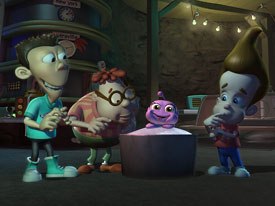
Deep convergence has been our mantra since 2000, says Nickelodeons Skagerlind, who explains that kids are not only taken on a journey back and forth between the TV and the computer, but also are encouraged to participate along the route. Theyre invested in the process the whole way, he says. Initiatives such as Splat and U-Pick Live, for example, have allowed kids to choose what programs they want to see online that day, among other interactive activities. Another convergent effort was connected to Jimmy Neutron; a game called Attack of the Twonkies was based on an episode of the show. Gamers had to find the Twonkies, cute aliens that are actually fierce monsters, throughout the Nick.com site (not just the Jimmy Neutron area) and put them to sleep with bad music.
Web cross-promotion can involve consumer products too. One component of the Web community on Trollz.com is the creation, sending and trading of spells and their antidotes. Licensed books and videos will include spell ingredients that can be used online. Buying merchandise also gives the purchaser a set amount of trollars, the fictional currency used to buy and sell things on the site. In another traffic-driving initiative, a book might be missing a chapter that readers can find online. While the book-only reader doesnt lose any of the plot, those who go online get bonus entertainment. You can only imagine the coordination thats gone on behind the scenes to get to this point, says Fowler.
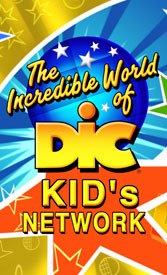
Generating Revenue
Networks and producers often earn significant income from their sites. Some sell ads both online-only and as part of a package with TV exposure and others offer merchandise through e-commerce. Meanwhile, selling game downloads has become a primary technique for making money online. Cartoon Network introduced downloads in November 2003, with most falling in the $10-$20 range. The effort has been profitable, and the company is planning to double its production of downloadable games in 2005. People have certainly warmed up to buying content online, says Condolora.
Nickelodeons pay-for-download games are collected in an area called Nick Arcade. Unlike free, streaming games, downloadable versions are for consumers to own, stored on their hard drive for play whenever they want. In addition, for-pay games typically offer added value such as full-screen play or different characters or levels. Some are unique, download-only games without a free version.
Not all marketers charge for Web content. DIC considered offering paid content or e-commerce, but decided against it. And PBS Kids, in the interest of accessibility, has no plans for paid content either.
Many networks and producers are looking toward interactive television (iTV) as a means of generating revenue and increasing consumers relationship with their brands. Nickelodeon is one marketer that has experimented with two-box convergence where the consumer uses the computer to interact with a television show while it airs through its partner Bubblecast. For example, trivia questions relating to a show might be available online during the broadcast, allowing players to compete against one another in realtime.
PBS has tested so-called one-box or synchronous iTV initiatives, where consumers who have the appropriate set-top box can interact with the show on the television screen through their remote. Several other marketers are looking into experimenting with one-box iTV, in conjunction with their cable operators, although the number of households that can receive iTV broadcasts is still very small.
Most marketers look at the Web as just one component of a future digital world comprised of technologies such as iTV, video-on-demand and wireless as well as Internet-delivered entertainment. Its a whole digital interactive entertainment sphere, says Skagerlind. Youll be able to move effortlessly and seamlessly from the TV to the computer screen to wireless and eventually to interactive television.
Karen Raugust is a Minneapolis-based freelance business writer specializing in animation, publishing, licensing and art. She is the author of The Licensing Business Handbook (EPM Communications).
